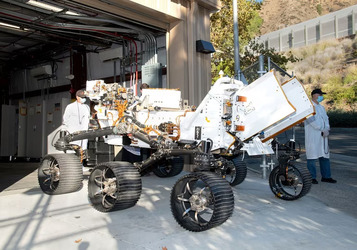The week's pick
Random Articles
Reseach Article
Study of Linear and Decision Feedback Equalizers on Fading Channels
| Communications on Applied Electronics |
| Foundation of Computer Science (FCS), NY, USA |
| Volume 5 - Number 1 |
| Year of Publication: 2016 |
| Authors: Zeeshan A. Abbasi, Zainul Abdin Jaffery |
 10.5120/cae2016652204
10.5120/cae2016652204
|
Zeeshan A. Abbasi, Zainul Abdin Jaffery . Study of Linear and Decision Feedback Equalizers on Fading Channels. Communications on Applied Electronics. 5, 1 ( May 2016), 32-36. DOI=10.5120/cae2016652204
Abstract
For evaluating the performance of wireless digital communication system the most important part is the simulation of wireless channel, as whole performance of the system is depends upon it. The Band limited communication channel, due to its dispersive time response, may restrict the high data rate, due to Inter symbol Interference (ISI). If the ISI is not taken care off and compensated may cause high Bit Error Rate (BER). Equalizers are used for this purpose. In this paper the performance of Linear and Decision Feedback Equalizers (DFE) are evaluated on three wireless channels i.e. two ray path, Rayleigh and Rician. A model of communication system having Quadrature Amplitude Modulation (QAM) with fading channels is implemented using MATLAB. The performance of Linear and DFE is evaluated on the basis of Bit Error Rate (BER) with varying Signal to Noise Ratio (SNR). The simulation results showed the performance of two equalizers on different channels. The Rayleigh channel model is the most suitable model for urban areas as it is the model which simulates a channel with no Line of Sight (LOS) path and is the most difficult environment.
References
- M. K. Simon and M. S. Alounini, “Digital Communication Over Fading Channels: A Unified Apprpach to Performance Analysis”, Wiley, New York 2000.
- Upena Dalal, “Wireless Communication and Networks”, Oxford University Press, 2015.
- Mahmood Farah Mosleh and Aseel Hameed AL Nakkash, “Combination of LMS and RLS Adaptive Equalizer for Selective Fading Channel”, European Journal of Scientific Research, Vol. 43 No 1,2010 pp 127-137
- A. Sudhir Babu and Dr K. V. Sambasive Rao, “Evalution of BER for AWGN, Rayleigh and Rician Fading Channels Under Various Modulation Schemes”, International Journal of Computer Applications, Volume 26-No.9, July 2011.
- Sharma O.P, Janyani V. And Sancheti S., “Recursive Least Square Adaptive Filter a better ISI Compensator”, World Academy of Science and Technology 52, 2009, pp 1031-1036.
- Garima Malik and Amandeep Singh Sappal, “Adaptive Equalization Algorithm: An Overview”, International Journal of Advance Computer Science and applications, Vol. 2, No. 3 March 2011 pp 62-67.
Index Terms
Keywords

